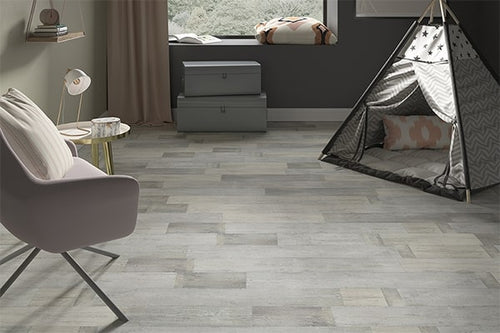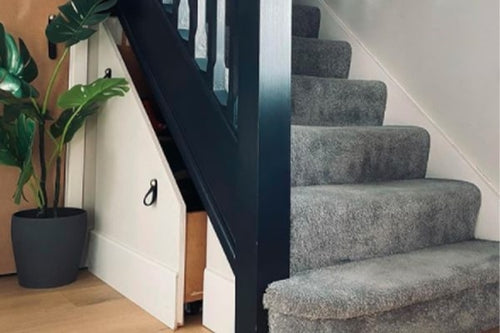UK Flooring Direct carry a range of installation products to help make installation simpler including our Easy-Fit Flooring Installation Kit, perfect for DIY installation of click engineered, laminate or Luxury Vinyl Tile (LVT) flooring.
What tools do I need to install laminate, real wood or luxury vinyl flooring?
Don't leave it until the last minute - failing to prepare is preparing to fail. Making a list of tools you're going to need, will help your installation project run smoothly. There's nothing worse than having to 'tools down' and go off to the local DIY retailer to search for a forgotten item, so thanks to our handy guide that won't be a problem.
As a guide, the minimum equipment for real wood or laminate flooring installations is as follows: you'll require a measuring tape, pencil, a hammer, a pull bar, a tapping block, jigsaw and spacers.
Vinyl installation requires a measuring tape, a pencil, a hammer, a tapping block, a pull bar and a cutting knife. No saw required, meaning less mess and no sawdust. This also makes for the ideal DIY project, as no professional tools or glue are needed thanks to its easy click system.
Do I need to do anything to my sub-floor before installation?
Finding that your sub-floor will need additional work will extend your project timeline and you could incur unforeseen costs from your installer. Additional information on checking your sub-floor can be found here.
Should I remove my skirting boards before laying the floor?
While it's not essential by removing the skirting, you will make your installation easier, provide a better expansion gap and give a professional clean look to your new floor. However, if this work is beyond your skills, adds too much time to your project or creates too much mess then UK Flooring Direct sell a range of matching scotias to match either your floor or skirting boards.
Scotia allows the expansion gap to be hidden from view while allowing the floor to expand and move, giving a clean look with less mess and time than removing the skirting boards.
Should I repair my walls or floor before laying my floor?
Wall and floor damage will need to be fixed with a water-based filler or levelling compound and based on the manufacturer's instructions given adequate time to dry. Be sure to complete any wall or ceiling decoration work before installing your floor. Also, note that any water-based repairing products or repainting will introduce additional moisture to a room and this will also need time to dry. For additional details on acclimatisation click here.
How do I lay engineered, laminate or vinyl floor over underfloor heating?
If you want to install a new floor above an underfloor heating system it should ideally be a water or "wet" system, not electric matting or a "dry" system. When laying a floor where underfloor heating has been installed it is important to follow these guidelines:
- You must use the floating floor installation method
- The heating must be started up at least 2 weeks before laying the floor to achieve an ambient living environment
- Make sure that there is no water leaking from the pipes and the system has been commissioned successfully as per the manufacturer's instructions
- If the subfloor is concrete, make sure this is dry. This means no more than 4% moisture, full depth of screed when the heating is turned off and the floor is cool
- A combination underlay incorporating a Damp Proof Membrane (DPM) should always be used such as our Cushion Ultra Silver Wood or Cushion Acoustic Gold Wood Underlay
- The surface temperature of the subfloor should not exceed 27 °C
- The heating must be turned off 48 hours before laying the floor
- 23 days after laying the floor, the heating should be turned on gradually, increasing 2 °C every 24 hours
A minimum temperature of 18 °C should be maintained


